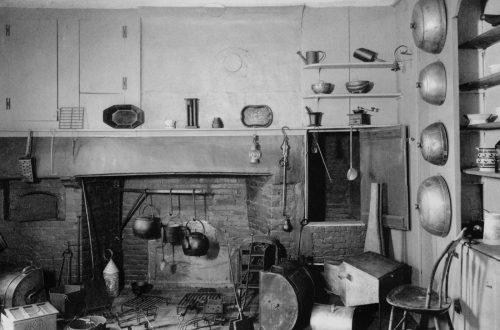
Can This Vegetable Garden Be Saved?
Here in eastern Massachusetts as the dry weather continues with no substantial rainfall on the horizon, everybody is worried about their lawns. At least the intense heat has let up. But we have bigger problems. If you’re a gardener, the drought has been bad news for your vegetable plants. Remember last year’s July that was so wet the tomato crop was ruined? How quickly things change.
Capturing every last drop
As for me, I have a drip irrigation system set up in my own garden to water my tomatoes, cucumbers, and peppers. I always add mulch before turning over and tilling the soil in the spring. That organic matter improves the soil tilth, which not only provides nutrients but also increases the garden’s drought resilience. The tilled-in mulch increases the ability of the soil to hold plant-available water and speeds the rate at which water infiltrates the soil. Some people are able to set up rain barrels to catch any rain that does fall from downspouts and use that for irrigation – something to think about for the future. Finally, you can mulch around your vegetable plants. That not only helps control weeds, but also helps keep the soil moist by shading the soil and roots, slowing water evaporation and keeping the roots cooler.
But when it comes to watering your vegetable garden, what about local water restrictions? I investigated. What I found out is that the guidelines are generally unclear. For example, a press release from the Newburyport mayor’s office largely addressed watering lawns and washing cars. The guidance mentioned using a layer of mulch around plants and setting out water-retaining basins in the garden. But it didn’t say yea or nay about watering the vegetable garden with a hose or watering can. I wish I could offer more concrete information. But you might need to call your own water authority to find out whether or not there are specific mandates for gardens to make sure you aren’t breaking the rules – keeping in mind that they are evolving with the weather conditions.
Looking for guidance
In any case, regardless of whether you grow your own vegetables, here’s what we’re looking at in Massachusetts. About a quarter of Eastern Massachusetts is in extreme drought, and it’s getting worse. In areas such as the Parker and Ipswich River watersheds, the rivers are at record low flows, according to Ryan O’Donnell, program coordinator for the Ipswich River Watershed Association. “It’s the lowest in the 80 years that we’ve been keeping records.”
How bad is it? O’Donnell says some farmers are deciding to abandon some of their crops. It’s not just the vegetables and corn that should now be at their prime; concern is also rising for the fruit trees due for harvesting later in the year. Newburyport is in the Merrimack River watershed where water is more plentiful. But Water Treatment Superintendent Tom Cusick told me this week that the district, now under a voluntary water restriction, may very soon need to upgrade to mandatory restrictions as the city’s reservoir nears 90 percent capacity. Here in Newbury, the restrictions are already mandatory.
I’ve seen that the large local farms have been irrigating their fields, but the corn I’ve bought this year isn’t as sweet as in the past, a problem that I attribute to lack of moisture and excess heat. The peaches are not at their best, either; they’re mealy, also likely the result of the drought.
Taking action on a broad scale
Out in California, the source of the lion’s share of our produce nationally, Governor Gavin Newsom recently announced a water management plan for the state. The plan encompasses conservation, as well as expanding water storage capacity, accelerating wastewater recycling projects, recapturing more storm runoff, and increased desalination of ocean water.
California and Arizona supply about two-thirds of the nation’s fruits and vegetables. There, the extreme drought has resulted in removing 600,000 acres from production in California alone. Agriculture in the area uses about 70 percent of the water from the Colorado River basin, and cuts in water for irrigation will likely mean further impacts on our food supply in the future such as reduction of lower-value crops. California produces 95 percent of the tomatoes for catsup and 83 percent of almonds sold. We can expect a dearth of canning tomatoes to be noticeable in stores this fall, among other impacts.
But elsewhere in the nation, most Americans don’t connect the dots. If they do, they act as if the problem will go away if they just ignore it. We shouldn’t be waiting until the water crisis is so critical that it’s too costly and impossible to solve. We need a smart water strategy in every locality that will assure ample clean water well into the future.
What to do besides a rain dance
Since the state makes the rules for local communities on water use, I suggest starting by contacting your state representatives and tell them we need to:
- Mandate water-efficient homebuilding regulations.
- Fix our leaking existing water infrastructure.
- Establish water-saving regulations for toilets, showers, tubs, clothes, and dishwaters as well as water-using home appliances.
- Implement ways to capture and store runoff, stormwater, and brown water for non-potable use.
- Work with universities and industry to research new ways to conserve, capture, and recycle water.
We need to be proactive in making sure that we have more than enough water, not only for drinking and daily use, but also for the local sources of our food.
To comment, please click on “Read in Browser” or on the headline to view the blog on the website. You can log in and comment at the end of the blog to share your thoughts and start a discussion.
If you’d like to share the blog, click on the Facebook icon or one of the others. Thanks!





2 Comments
Ellen Grau
Hey Bro,
In September the FEDS will move in and mandate the Colorado River Water.
“A warmer, drier West is what we are seeing today,” Touton testified before the Senate Energy and Natural Resources Committee. “This Friday, [the Bureau of] Reclamation will celebrate 120 years since we were created by Congress, and the challenges we are seeing today are unlike anything we have seen in our history.”
The cuts could be drastic, she warned, reducing Colorado River water access by between 2 and 4 million acre-feet across seven states that rely on it—close to the 4.4 million acre-feet of Colorado River water California is entitled to annually. Arizona, by contrast, is entitled to 2.8 million acre-feet of Colorado River water every year.
It is going to get ugly.
Heidi Fram
I wish everyone could read and follow this article! Thanks